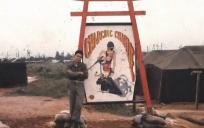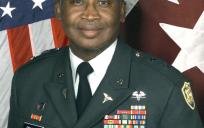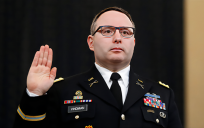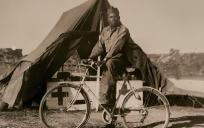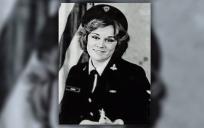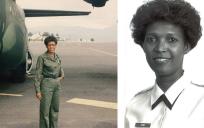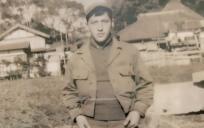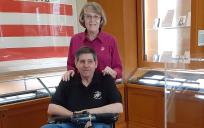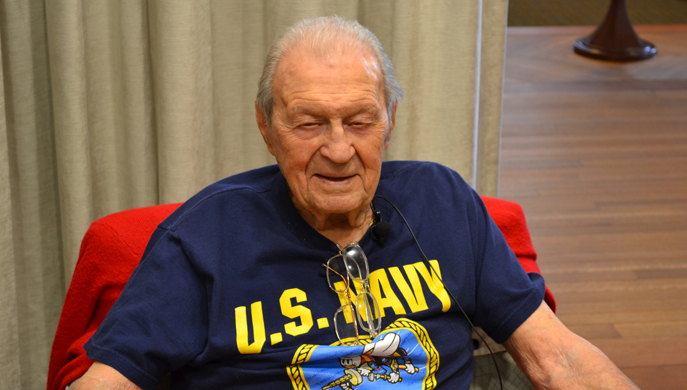
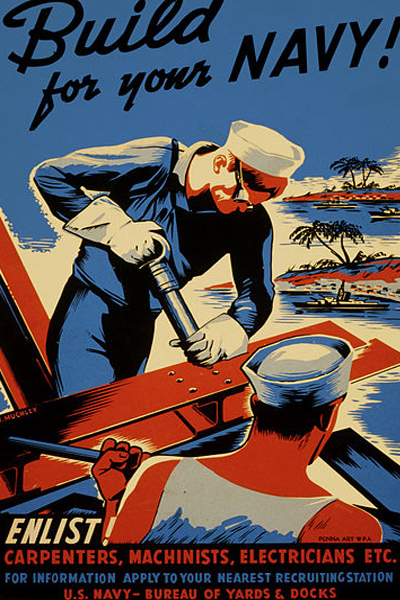
Record date:
Arthur Grotto, Shipfitter, 2nd Class
Serving in both theaters of World War II, Arthur Grotto used his three-years of experience as a welder for the Chicago Bridge and Iron Works to support his country, enlisting into the U.S. Navy during World War II as a part of the 29th Construction Battalion.
Born in Rockford, Ill. in 1920, as a child Arthur Grotto moved to an Italian neighborhood in Chicago that provided a community of support for him and his working-class parents during the Great Depression. Upon graduating high school, Grotto found employment with the Chicago Bridge and Iron Works as a welder. He was employed there for nearly three years before joining the United States Navy in Fall 1942 and putting those skills to good use supporting his country.
As a petty officer, 2nd class with the 29th Construction Battalion—also known as the Seabees—Grotto counted himself lucky to have leadership that understood the importance of recruiting personnel with actual backgrounds in the trades, who also treated them with respect, and as an integral part of the force.
Thinking that he was headed to the Pacific theater, the ship he and his fellow troops were traveling on—the Queen Elizabeth, an ocean liner that had been taken over to service troops—instead went to Scotland. Grotto and the rest of his 29th Battalion spent their time in the United Kingdom preparing machinery and setting up bases—like they did in Lisahally, Ireland, and again in Tynemouth, England.
About this portion of his military experience, Grotto relates stories of what it was like to spend 22 months in one place; of how the locals felt about the American troops; about listening to broadcasts of Lord Haw-Haw; and, more seriously, about the constant risk of Luftwaffe attacks, and seeing the plumes of smoke coming from London bombings.
After his 22 months in England, Grotto and the 29th were sent home on liberty leave, before being reassigned to the Pacific—the Philippines and China, specifically. Here, he found that the hands-on training that he had received in England—in dealing with Luftwaffe, and air-raids—might have helped prepare him for Kamikaze, but not necessarily the close proximity to Japanese troops on the ground.
At the end of his service, Grotto remained in touch with his fellow Seabees, traveling the country to visit many of his new friends. He still stays active in various veterans organizations, including the American Legion Post #118, and enjoys giving presentations about his service to area school children.
